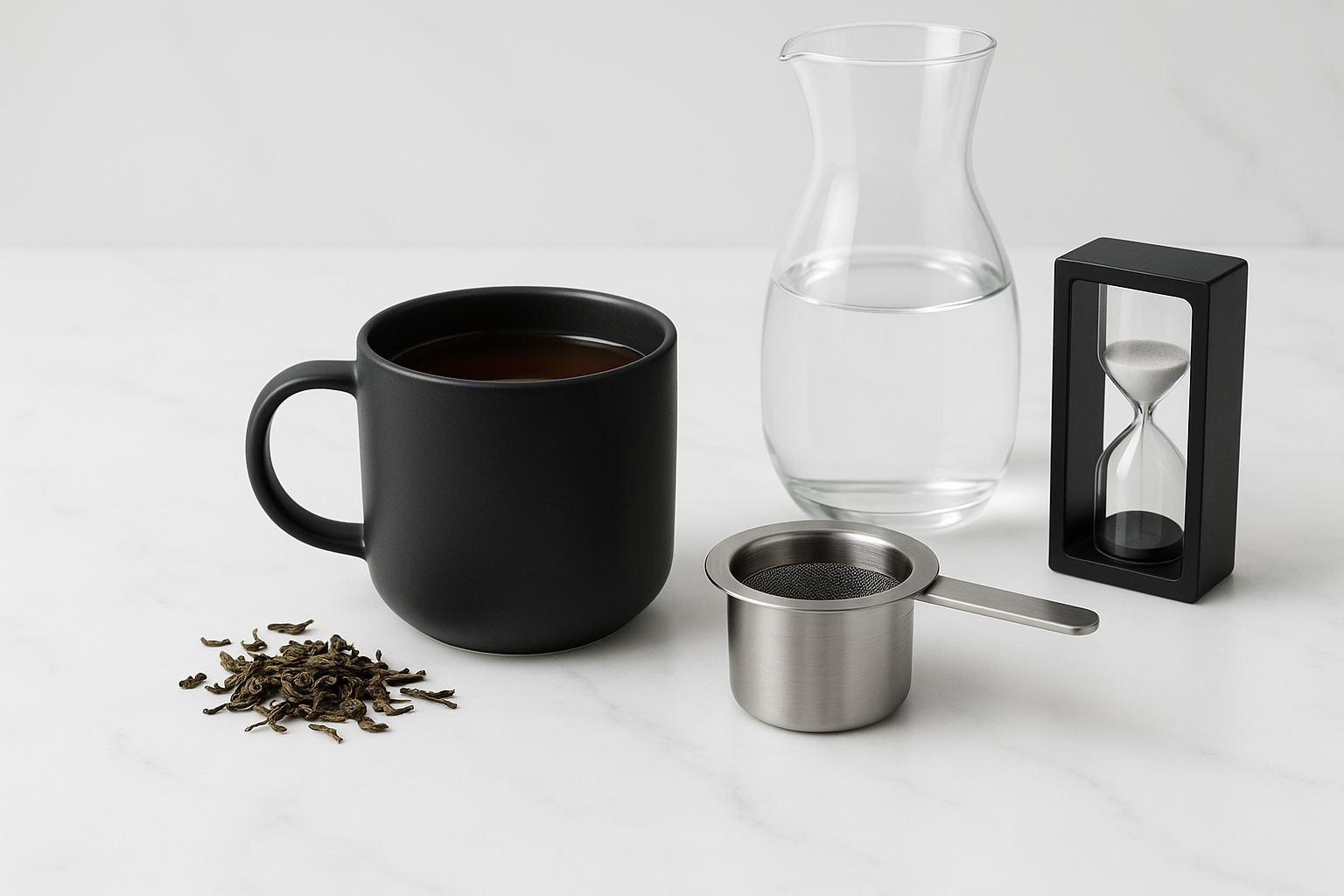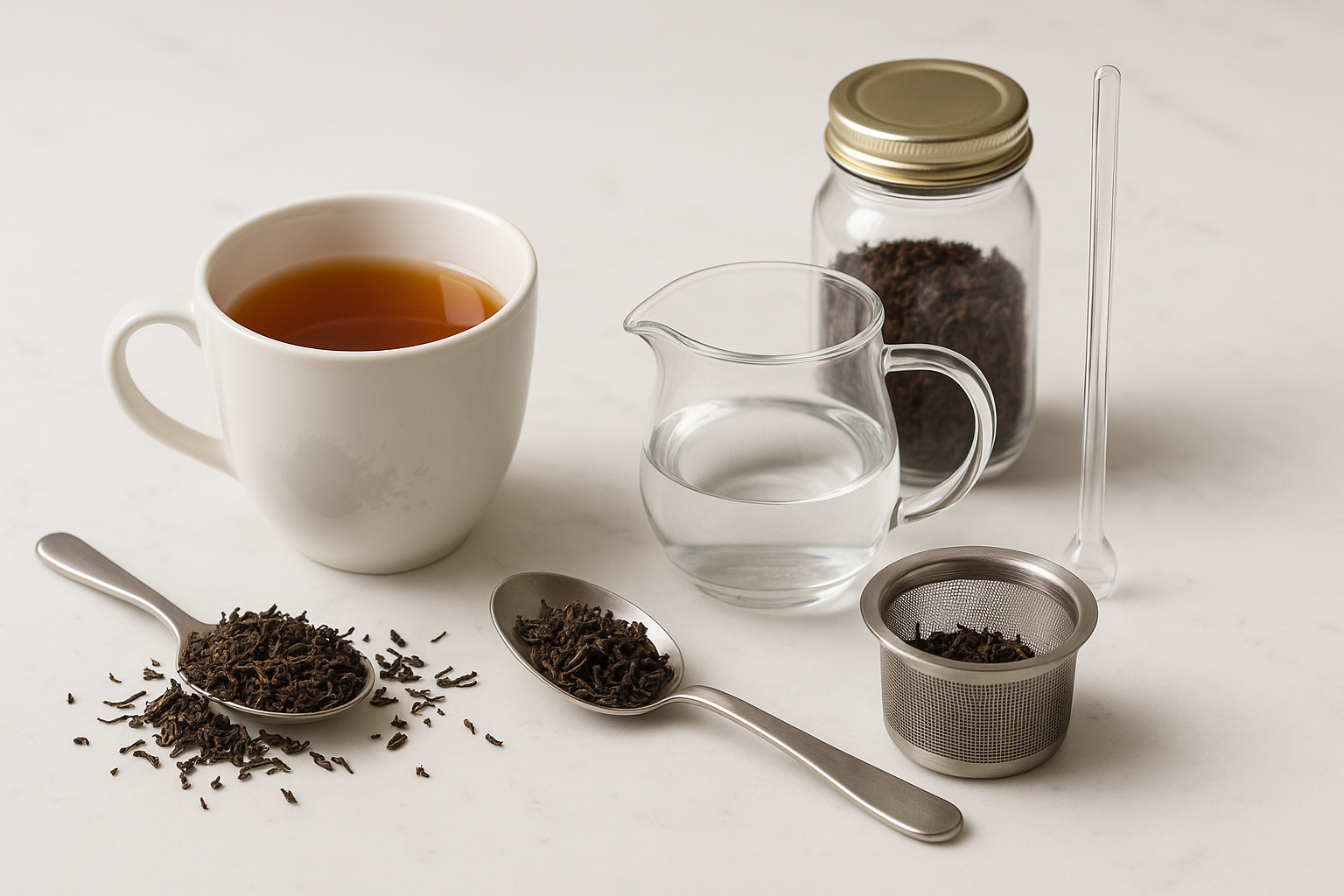Article: Why Does My Tea Feel Dry and Astringent? 3 Mouth-Feel Fixes

Why Does My Tea Feel Dry and Astringent? 3 Mouth-Feel Fixes
You take a sip and immediately feel it—that dry, puckering sensation that seems to suck all the moisture from your mouth. Your lips purse involuntarily, your tongue feels chalky, and you're left with an almost cotton-mouth feeling that lingers long after you swallow. This isn't just bitter tea; this is something different entirely.
What you're experiencing is astringency, and while it's often confused with bitterness, it's actually a completely different sensation with its own specific causes and solutions. The chalky, dry feeling that makes you want to reach for a glass of water isn't about taste—it's about how certain compounds in your tea are interacting with your mouth.
The encouraging news? Astringency is one of the most fixable tea problems once you understand what's causing it. Three specific adjustments to your brewing method can transform that mouth-puckering experience into smooth, satisfying tea that feels as good as it tastes.
Understanding Astringency: More Than Just Taste
Astringency isn't actually a taste—it's a tactile sensation. When certain compounds called tannins bind with proteins in your saliva and mouth tissues, they create that characteristic dry, puckering feeling. Think of the sensation you get from a very dry red wine, an unripe banana, or strong black coffee. That's astringency at work.
Astringency vs. Bitterness: The Key Difference
While bitterness affects your taste buds, astringency affects how your mouth feels. You can have astringent tea that isn't particularly bitter, and bitter tea that doesn't feel dry. Understanding this distinction is crucial because the fixes are different for each problem.
- Bitter tea tastes harsh and unpleasant on your tongue
- Astringent tea makes your mouth feel dry, chalky, or puckered
Many teas that people describe as "too strong" are actually astringent rather than bitter. The mouth-feel is what makes the tea unpleasant, not necessarily the flavor itself.
The Science Behind the Pucker
Astringency happens when tannins—naturally occurring compounds in tea leaves—are over-extracted into your cup. These tannins then bind with proteins in your saliva, temporarily reducing lubrication in your mouth and creating that dry, rough sensation.
Different teas naturally contain different levels of tannins. Black teas tend to be higher in tannins than green or white teas, which is why they're more prone to astringency when over-extracted. However, any tea can become astringent under the wrong brewing conditions.
The goal isn't to eliminate tannins entirely—they contribute to tea's complexity and health benefits. Instead, we want to extract them in balance with other compounds that provide smoothness and body.
The 3 Astringency Fixes That Work
1. The Temperature Drop: Cool Down for Smooth Results
The Problem: Water that's too hot extracts tannins aggressively, pulling them out faster than the mellowing compounds that keep tea smooth. Even 10-15°C (15-20°F) above optimal can turn a balanced tea into a mouth-puckering experience.
The Science: Tannins extract more readily at higher temperatures than many of the compounds that provide smoothness and body. By reducing temperature, you slow tannin extraction while maintaining extraction of flavor compounds, creating better balance.
The Fix: Reduce your water temperature by 8-11°C (15-20°F) from your current brewing temperature:
- Black teas: Try 80-85°C (176-185°F) instead of 95-100°C (203-212°F)
- Oolong teas: Use 75-80°C (167-176°F) instead of 85-90°C (185-194°F)
- Green teas: Aim for 55-60°C (131-140°F) instead of 65-70°C (149-158°F)
- White teas: Use 70-75°C (158-167°F) instead of 80-85°C (176-185°F)
Pro Tip: This temperature reduction often improves flavor complexity as well, allowing subtler notes to emerge that higher temperatures can overpower.
2. The Time Cut: Shorter Steeps for Smoother Results
The Problem: Extended steeping gives tannins more time to extract, even at proper temperatures. The longer tea leaves sit in water, the more these astringent compounds accumulate in your cup.
The Science: Tannin extraction increases exponentially with time, not linearly. The difference between a 3-minute steep and a 4-minute steep isn't just 33% more tannins—it can be significantly more, depending on the tea and conditions.
The Fix: Reduce your steeping time by 1 full minute from your current timing:
- Black teas: Try 2-3 minutes instead of 3-4 minutes
- Oolong teas: Use 1-3 minutes instead of 2-4 minutes
- Green teas: Aim for 30 seconds-1 minute instead of 1-2 minutes
- White teas: Try 1-2 minutes instead of 2-3 minutes
Balance Strategy: If shorter steeping makes your tea too weak, increase the amount of tea rather than extending the time. This builds flavor without building astringency.
3. The Water Switch: Softer Water for Gentler Extraction
The Problem: Hard water—water high in minerals like calcium and magnesium—can intensify tannin extraction and make astringency more pronounced. The minerals in hard water interact with tannins in ways that enhance their binding properties.
The Science: Mineral content affects how tannins behave in solution and how they interact with your mouth tissues. Softer water generally produces smoother, less astringent tea, even when using identical tea, temperature, and timing.
The Fix: Switch to softer water options:
- Filtered water removes many minerals that intensify astringency
- Bottled spring water with low mineral content (check TDS levels under 150 ppm)
- Distilled water (though this can make tea taste flat, so blend with small amounts of mineral water)
Testing Your Water: If you're unsure about your water's hardness, TDS (Total Dissolved Solids) test strips can help. Aim for 75-150 ppm for optimal tea brewing.
Your Astringency Diagnostic Guide
| If your tea feels... | Most likely cause | Mouth-feel fix |
|---|---|---|
| Immediately dry and puckering | Water temperature too hot | Reduce temperature by 8-11°C (15-20°F) |
| Increasingly chalky as you drink | Steeped too long | Cut steeping time by 1 minute |
| Rough and harsh on your tongue | Hard water intensifying tannins | Switch to filtered or soft water |
| Dry but not bitter | Tannin over-extraction | Combine temperature + time reduction |
| Astringent even with proper brewing | Poor quality or damaged tea leaves | Replace with higher quality tea |
The Professional Approach to Tannin Management
Professional tea tasters manage astringency systematically:
- Start with temperature: This has the most immediate impact on tannin extraction
- Adjust timing: Fine-tune extraction duration for balance
- Consider water quality: Evaluate how mineral content affects mouth-feel
- Assess tea quality: Determine if the problem is brewing technique or leaf quality
This approach prevents the common mistake of trying to mask astringency with milk or sugar instead of addressing the root cause through proper extraction management.
Why These Fixes Work Without Losing Benefits
The goal isn't to eliminate tannins—they contribute to tea's antioxidant properties and complex flavor profile. Instead, these fixes help you extract tannins in proper proportion to other compounds that provide smoothness and balance.
Temperature reduction slows tannin extraction while maintaining flavor compound extraction, creating better overall balance.
Time reduction limits total tannin accumulation while preserving desirable flavors that extract quickly.
Water adjustment optimizes the medium in which extraction occurs, allowing for gentler, more controlled tannin release.
Making Your Next Cup Smoother
Astringent tea doesn't require you to choose between flavor and comfort. By understanding that astringency comes from tannin over-extraction, not poor tea quality, you can adjust your brewing method to create smooth, satisfying cups that feel as good as they taste.
Start with the temperature reduction—this single change eliminates astringency in most cases. If your tea still feels dry, combine it with shorter steeping time. Water quality adjustments provide the final level of fine-tuning for perfect mouth-feel.
The Balance We're After
Great tea should feel smooth and comfortable in your mouth, allowing you to appreciate its complex flavors without distraction. When your tea makes your mouth feel dry and chalky, it's not asking you to add milk or sugar to mask the problem. It's asking you to understand tannin extraction and brew with precision rather than guesswork.
Your tea leaves contain all the compounds needed for both flavor and smoothness. The question is whether you're extracting them in proper balance. With the right temperature, timing, and water, every cup can deliver the smooth, satisfying mouth-feel that makes tea drinking a pleasure rather than an endurance test.

